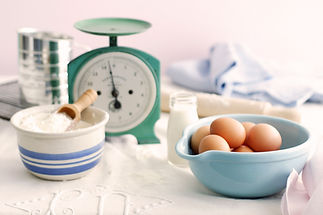
We only use the highest quality ingredients in our Schnitzel fingers. The chicken is marinaded in a special blend including Amber Honey and Dijon Mustard and breaded in a crispy pretzel coating. Our beer cheese is made with fresh cream, cheddar, and mozzarella cheeses incorporated with a special blend of spices and a splash of beer for flavor. Our products contain egg, milk, wheat, and soy.

In the process of developing a marketable product based on a recipe from Germany, several different methods of preparing the product were used. During preliminary preparation, the tenders were tenderized to thin out the meat and fat was trimmed off. Initially, the tenders were breaded with two different breadings, one was an American breadcrumb while the other was breaded with a pretzel mix breading. After testing both products we decided to go with the pretzel breading as it added a unique taste and texture to the product. When the product was first being developed, we did not attempt to marinate the tenders. Once we decided to marinate the tenders, we ran into issues with what type of marination to use and how to maximize pickup. The marination we chose contained dijon mustard in order to complement the dijon in the beer cheese dip. We used a vacuum tumbler to maximize marination pickup. In order to enhance the value of our product we have paired it with a beer cheese dip. This dip is made by melting various cheeses over a double boiler and adding beer and spices allowing for the alcohol to cook off. The tenders are then breaded using an egg, garlic, and beer batter followed by a pretzel crumb breading. The tenders are then fried to a brown 4 to a temperature of 165F. The tenders are then allowed to cool and are frozen and packaged.




Making sure the tenders reach 165F!
Vacuum Tumbling to enhance marination uptake!
Perfectly breading the tenders to have a golden brown finish!

SCIENCE!
When developing the product several different scientific principles that we learned in class were applied. First, when creating a marinade for the tenders, we used a salt and phosphate blend to allow for a higher marinade uptake. In order to further increase marinade uptake, we used a vacuum tumbler in order to increase yield. Another scientific element we included was the addition of canola oil to the beer cheese to avoid a film on the surface of the beer cheese. The addition of the unsaturated canola oil helped to break up the stacking of the saturated fatty acids in the cheese allowing for a more liquid consistency. Lastly, based on research on how to avoid the film, it was decided to use a high speed mixer to further break up the tightly stacked fatty acids. This decision was based on a Kraft patent about methods of making a high moisture cheese sauce.
The scientific principles that were applied were used to increase the yield of the product. Based on the measurement taken in lab, we were able to have a total yield increase of 18.3%. This greatly increased the value of the product. The marination pickup was 11.1% and the breading pickup was 16.2%. However the cook loss was 9%. With the total coating pickup near 20% the overall profit on the product goes up.
